| Biomarker |
Biological and/or environmental interpretation |
References |
| Hopanoids
|
| C30-hopanes |
diverse bacterial lineages, few eukaryotic species (e.g. some cryptogams, ferns, mosses, lichens, filamentous fungi, protists) |
Rohmer et al., 1984 |
| extended C31 to C35 hopanes (a.k.a. homohopanes) |
diagnostic for Bacteria, biosynthesis appears to be restricted to lineages that are not strictly anaerobic (with a possible exception (Thiel et al., 2003) |
Ourisson and Albrecht, 1992, Rohmer et al., 1984 |
| extended C32 to C36 2a-methylhopanes |
diagnostic for cyanobacteria and prochlorophytes |
Bisseret et al., 1985, Summons et al., 1999 |
| extended C32 to C36 3b-methylhopanes |
diagnostic for some microaerophilic proteobacteria (certain methylotrophs, methanotrophs, acetic acid bacteria) |
Zundel and Rohmer, 1985a, Zundel and Rohmer, 1985b, Zundel and Rohmer, 1985c, Summons and Jahnke, 1992 |
| 28,30-dinorhopane, 25,28,30-trinorhopane (TNH) |
often prominent in sediments from euxinic environments |
Grantham et al., 1980, Peters and Moldowan, 1993 |
| Steroids
|
| 24-norcholestane (C26) |
possible diatom origin, high concentrations relative to 27-norcholestane indicate Cretaceous or younger crude oil |
Holba et al., 1998a, Holba et al., 1998b |
| Cholestane |
in aquatic sources probably almost exclusively derived from diverse eukaryotes |
Volkman, 2003 |
| |
in organic matter from terrestrial sources (e.g. paleosols) input from soil bacteria of the order Mxyococcales conceivable |
Bode et al., 2003, Kohl et al., 1983 |
| Ergostane, stigmastane |
exclusively eukaryotic, but usually no distinct sources discernible |
Volkman, 2003 |
| 24-n-propylcholestane |
pelagophyte algae, a biomarker for marine conditions with few exceptions |
Moldowan et al., 1990 |
| 24-isopropylcholestane |
sponges and possibly the sponge-related stromatoporoids |
McCaffrey et al., 1994b |
| 2- and 3-alkylsteranes |
ubiquitous in bitumens of all ages, possibly heterotrophic alteration products of sedimentary steroids |
Summons and Capon, 1991 |
| 4-Methycholestane and 4,4-dimethylcholestane |
diverse eukaryotic sources, high concentrations likely indicate a dinoflagellates origin |
Summons et al., 1994a |
|
if strongly depleted in 13C indicative for methylotrophic bacteria (Methylococcaceae) |
Volkman, 2003 |
| 4-methylergostane, 4-methylstigmastane |
diverse eukaryotic sources, high concentrations likely indicate a dinoflagellate origin |
Volkman, 2003 |
| Dinosterane |
in the Mesozoic and Cenozoic specific for dinoflagellates (with possible minor diatom contribution), in Paleozoic and Neoproterozoic samples probably derived from protodinoflagellates |
Moldowan and Talyzina, 1998, Robinson et al., 1984, Volkman et al., 1993 |


